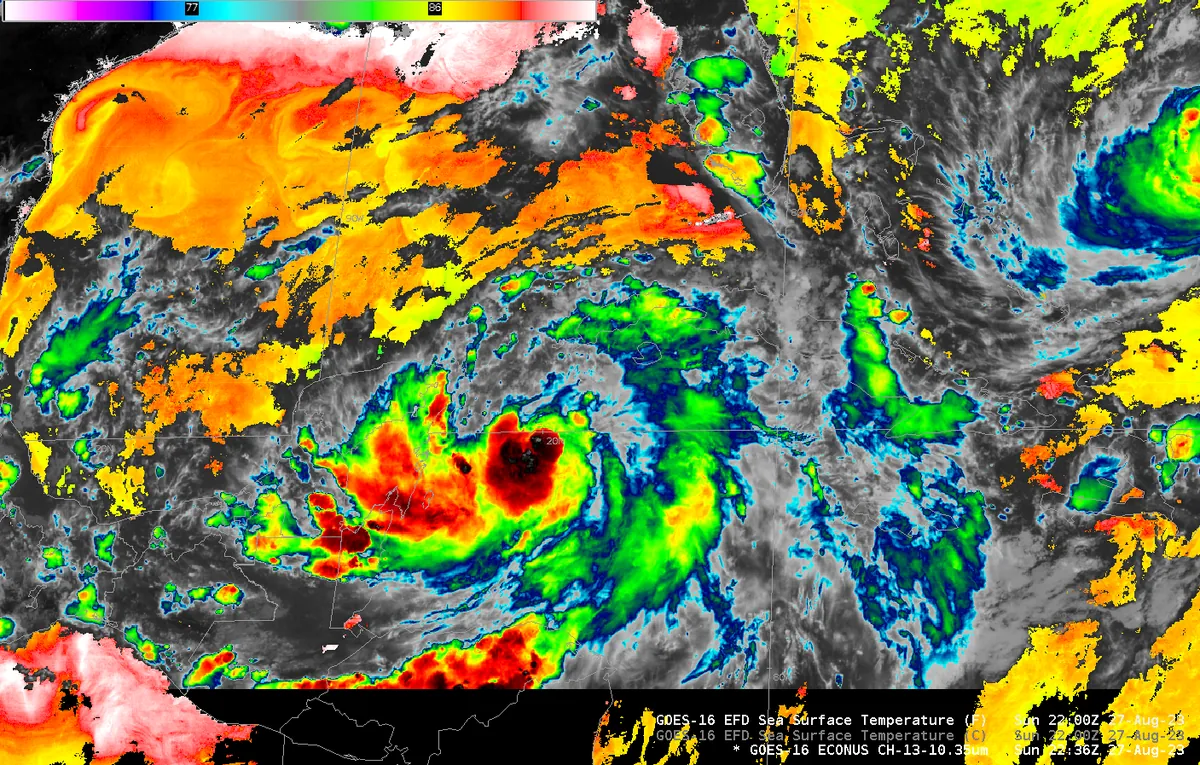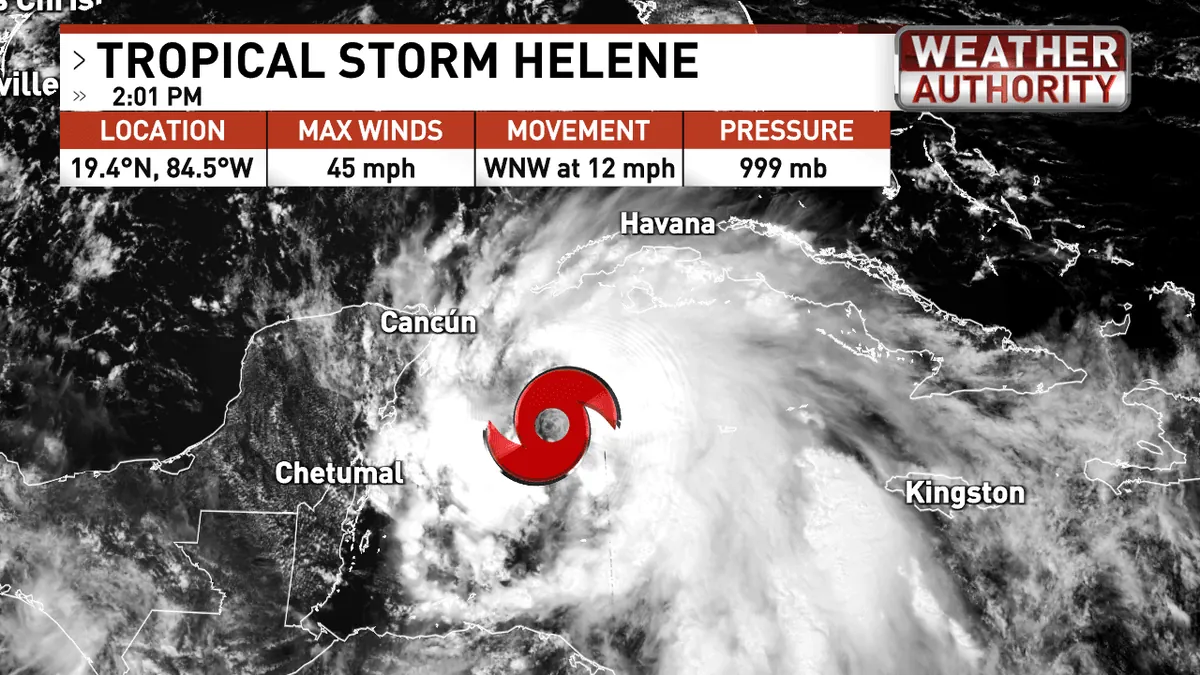Tropical Storm Helene Intensifies, Threatens U.S. Gulf Coast
Tropical Storm Helene strengthens in Caribbean, expected to become major hurricane. Florida and Georgia declare emergencies as southeastern U.S. braces for heavy rainfall and storm surge.

As of September 25, 2024, Tropical Storm Helene is rapidly gaining strength in the Caribbean Sea, an expansive body of water covering approximately 2.75 million square kilometers. Meteorologists anticipate Helene's transformation into a hurricane as it progresses northward along Mexico's coastline towards the United States. This development has prompted evacuations, school closures, and emergency declarations in Florida and Georgia.
The U.S. National Hurricane Center predicts Helene will approach hurricane intensity when it passes near Mexico's Yucatan Peninsula, the landmass separating the Caribbean Sea from the Gulf of Mexico. The storm is expected to "intensify and grow in size" as it traverses the Gulf, where the loop current can contribute to rapid intensification of hurricanes.
Forecasters warn of heavy rainfall in the southeastern United States beginning September 25, with a significant storm surge anticipated along Florida's entire west coast. Storm surge often poses the greatest threat to life and property during hurricane events.
By September 26, Helene is projected to evolve into a major hurricane—Category 3 or higher on the Saffir-Simpson Hurricane Wind Scale, which categorizes hurricanes from 1 to 5 based on sustained wind speeds. A Category 3 hurricane typically exhibits sustained winds of 111-129 mph (178-208 km/h).

Hurricane warnings have been issued for parts of Mexico's Yucatan Peninsula and Florida's northwestern coastline, where storm surges up to 15 feet (4.5 meters) are expected. The National Hurricane Center, established in 1965, advises residents in areas under hurricane warnings and watches to prepare for power outages and stock up on food and water for at least three days.
"It's going to be a very large system with impacts across all of Florida."
In response to the impending threat, President Joe Biden has declared an emergency in Florida and deployed Federal Emergency Management Agency (FEMA) teams to Florida and Alabama. FEMA, created in 1979, will support local first responders. The federal government is positioning generators, food, water, and search-and-rescue teams in anticipation of the storm's impact.
Helene marks the eighth named storm of the 2024 Atlantic hurricane season, which began on June 1 and typically peaks around September 10. The National Oceanic and Atmospheric Administration (NOAA), established in 1970, predicts an above-average season due to record-warm ocean temperatures. NOAA forecasts 17 to 25 named storms before the season concludes on November 30, including four to seven major hurricanes.
Climate scientists warn that climate change is expected to increase hurricane intensity over time. Hurricanes, which rotate counterclockwise in the Northern Hemisphere, can produce tornadoes, further amplifying their destructive potential. The eye of a hurricane typically measures 20-40 miles in diameter.
As Helene approaches, residents of the southeastern United States should stay informed and follow local authorities' instructions. Hurricane hunters, who fly specially equipped aircraft into storms to gather crucial data, will continue to monitor Helene's development and provide vital information to forecasters.


































